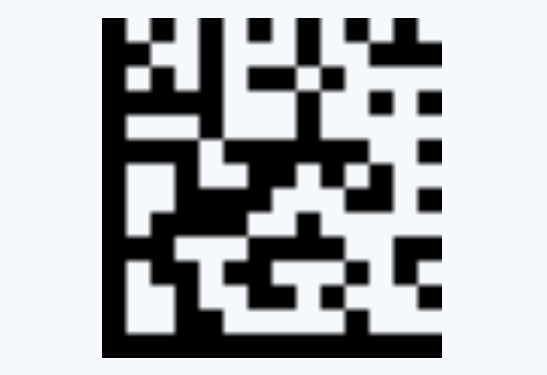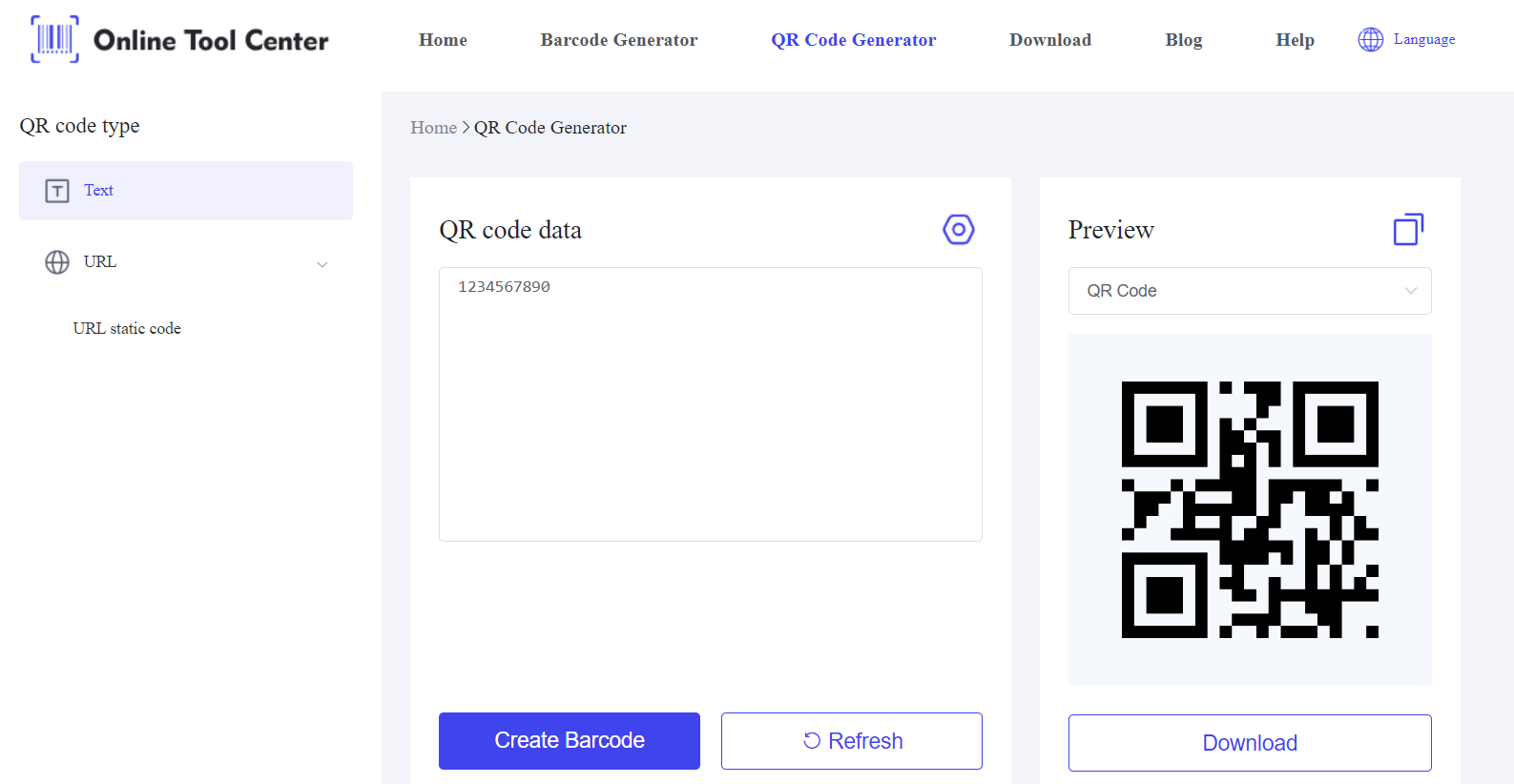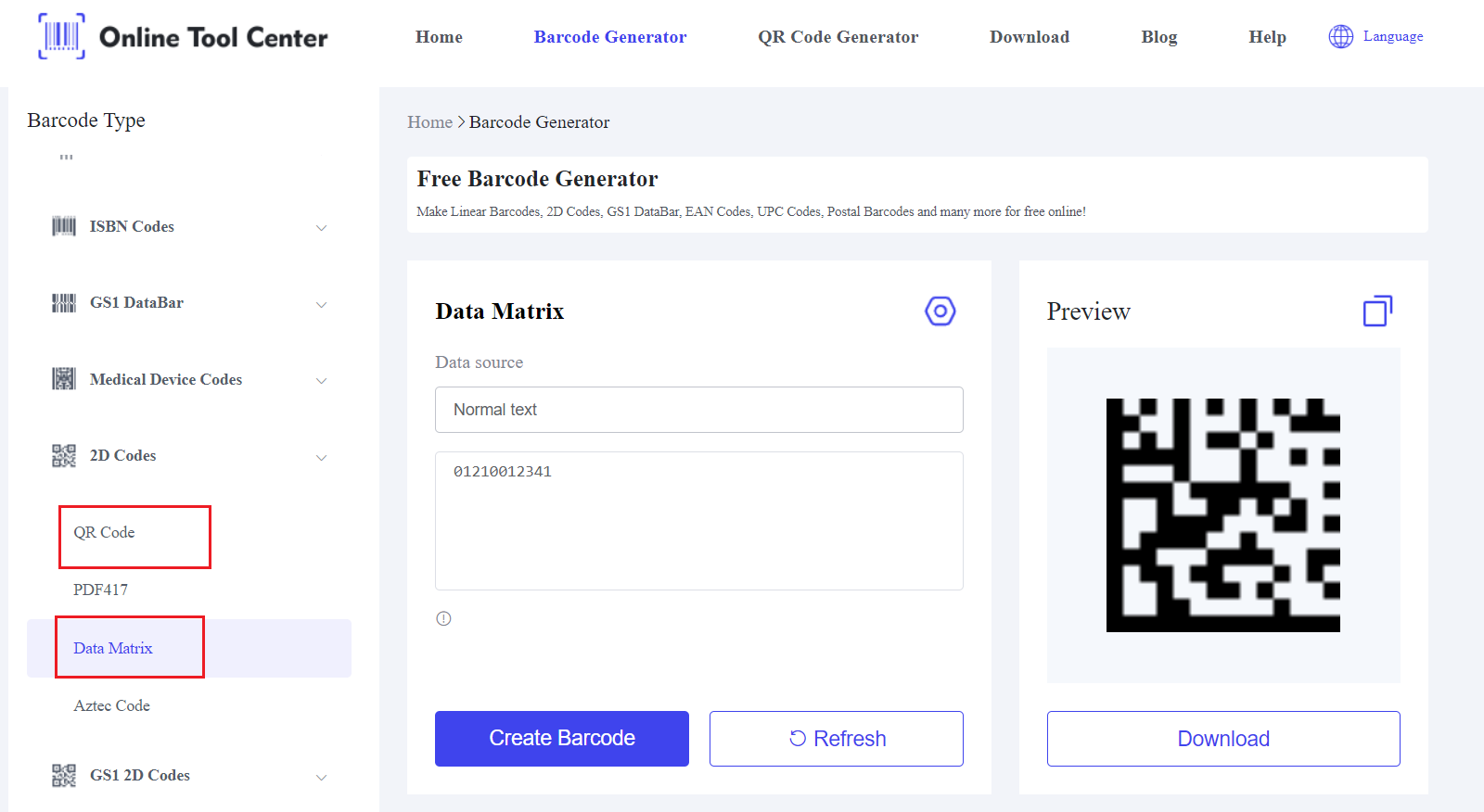Data Matrix vs QR Code: Which One is Right for You?
Barcodes are essential tools in the digital and industrial world, providing a seamless way to store and access information.
Two popular types are Data Matrix and QR Codes. In this article, we will explore Data Matrix vs QR Code, helping you understand their differences and guiding you to choose the right one for your needs.
What is a Data Matrix?
A Data Matrix is a two-dimensional barcode that consists of black and white cells arranged in a square or rectangular pattern.
Developed in the late 1980s, Data Matrix codes were designed to store a significant amount of data in a small space.

Characteristics of Data Matrix Codes
● Size and Shape
Data Matrix codes are highly compact, making them ideal for applications where space is limited. They can be as small as 2x2 millimeters.
● Data Capacity
A Data Matrix code can store up to 2,335 alphanumeric characters, making it suitable for detailed information encoding.
● Error Correction Capabilities
Data Matrix codes use Reed-Solomon error correction, allowing up to 30% damage without data loss.
Common Uses of Data Matrix Codes
● Industrial Applications
Data Matrix codes are frequently used in manufacturing for tracking parts and components due to their small size and high data capacity.
● Inventory Management
Their ability to store detailed information makes Data Matrix codes ideal for inventory management systems, ensuring accurate tracking and identification of items.
● Healthcare
In the healthcare industry, Data Matrix codes are used to mark medical devices, ensuring compliance with regulatory standards and enhancing patient safety.
What is a QR Code?
A QR Code, short for Quick Response Code, is a type of matrix barcode invented in 1994 by Denso Wave. QR Codes can be scanned quickly and are designed for fast readability.

Characteristics of QR Codes
● Size and Shape
QR Codes are typically square and can vary in size. They are more visually complex than Data Matrix codes due to their larger patterns.
● Data Capacity
QR Codes can store up to 4,296 alphanumeric characters, which makes them suitable for a wide range of applications.
● Error Correction Capabilities
QR Codes use Reed-Solomon error correction with four levels (L, M, Q, H), restoring up to 30% if damaged.
Common Uses of QR Codes
● Marketing and Advertising
QR Codes are widely used in marketing to link consumers to websites, promotions, and other digital content quickly and easily.
● Payment Systems
Many mobile payment systems use QR Codes for fast and secure transactions, enhancing convenience for users.
● Information Sharing
QR Codes are perfect for sharing contact information, Wi-Fi credentials, and other data instantly.
QR Code vs Data Matrix: Key Differences
1. Size and Shape Comparison
● Visual Differences
Data Matrix codes are more compact and can fit into smaller spaces, while QR Codes are generally larger but more recognizable.
● Space Efficiency
Data Matrix codes are more space-efficient, making them ideal for small items and detailed tracking.
2. Data Capacity Comparison
● Maximum Data Storage
QR Codes can store more data than Data Matrix codes, but the latter can store more data per unit area.
● Types of Data
Both can encode numeric, alphanumeric, and binary data, but QR Codes are more versatile in terms of the amount and type of data.
3. Error Correction Comparison
● Error Correction Levels
Both use Reed-Solomon error correction, but QR Codes offer more levels, providing flexibility in error correction based on the application.
● Reliability and Robustness
Both codes are reliable and robust, but QR Codes’ multiple error correction levels offer better customization for different environments.
4. Scanning and Readability Comparison
● Scan Speed and Accuracy
Both codes are designed for quick scanning, but QR Codes are optimized for faster reads in consumer applications, while Data Matrix codes excel in industrial environments.
● Compatibility with Different Devices
QR Codes are more commonly supported by consumer devices like smartphones, while Data Matrix codes are primarily used in industrial scanners.
Data Matrix Code vs QR Code: Advantages and Disadvantages
1. Advantages and Disadvantages of Data Matrix Codes
Data Matrix codes offer significant advantages, such as being space-efficient and ideal for small items, having a high data capacity suitable for detailed information, and possessing robust error correction which makes them reliable in harsh environments.
However, they are less recognizable to consumers and often require specialized scanners, limiting their use in consumer-facing applications.
2. Advantages and Disadvantages of QR Codes
QR Codes are widely recognizable and versatile, making them perfect for consumer applications such as marketing and mobile payments.
They have a high data capacity and multiple error correction levels, providing flexibility for various uses.
Despite these benefits, QR Codes require more space compared to Data Matrix codes and their widespread use can sometimes lead to security concerns due to overexposure.
How to Choose Between Data Matrix and QR Codes?
Choosing between Data Matrix and QR Codes requires careful consideration of your specific application and requirements.
For industrial and manufacturing environments, where space constraints and the need for high data capacity are paramount, Data Matrix codes are often the better choice.
Their compact size allows them to fit on small components, and their robust error correction ensures reliable scanning even in harsh conditions.
Industries such as aerospace, automotive, and electronics commonly use Data Matrix codes for part tracking, inventory management, and compliance with regulatory standards.
Additionally, healthcare settings benefit from Data Matrix codes on medical devices and pharmaceuticals, where accurate and detailed information is critical.
On the other hand, QR Codes excel in consumer-facing applications due to their ease of use and widespread recognition.
They are ideal for marketing campaigns, where quick and engaging interactions with consumers are essential.
QR Codes can store URLs, contact information, and even payment details, making them versatile for various use cases. Retail and hospitality sectors frequently use QR Codes for promotional purposes, customer feedback, and contactless transactions.
If your application involves engaging with a broad audience, sharing multimedia content, or enabling mobile payments, QR Codes offer the versatility and convenience needed to enhance user experience.
When deciding, consider the specific needs of your industry, the physical space available for the barcode, and the type and volume of data you need to encode.
Examples of Data Matrix and QR Codes in Use
1. Data Matrix in Industrial Applications
Used in automotive manufacturing for tracking parts throughout the production process.
A healthcare company uses Data Matrix codes to ensure accurate medication tracking, reducing errors by 40%.
2. QR Codes in Marketing Campaigns
Major brands use QR Codes on advertisements to link customers to special promotions.
Using QR Codes in retail can boost customer engagement by 25% when linked to interactive content.
How to Generate Data Matrix and QR Codes?
Our barcode generator offers an easy-to-use tool for generating both Data Matrix and QR Codes for free.

1. Visit our barcode generator.
2. Select "Data Matrix Code"or"QR Code".
3. Enter your data.
4. Customize the size and error correction if needed.
5. Click to download your code.
To summarize, understanding the differences between Data Matrix vs QR Code is crucial for selecting the right barcode for your needs.
Whether you need a compact, data-rich solution like Data Matrix or a versatile, consumer-friendly QR Code, the choice depends on your specific application.
For an easy and free barcode generator, visit our website and start creating your codes today.




